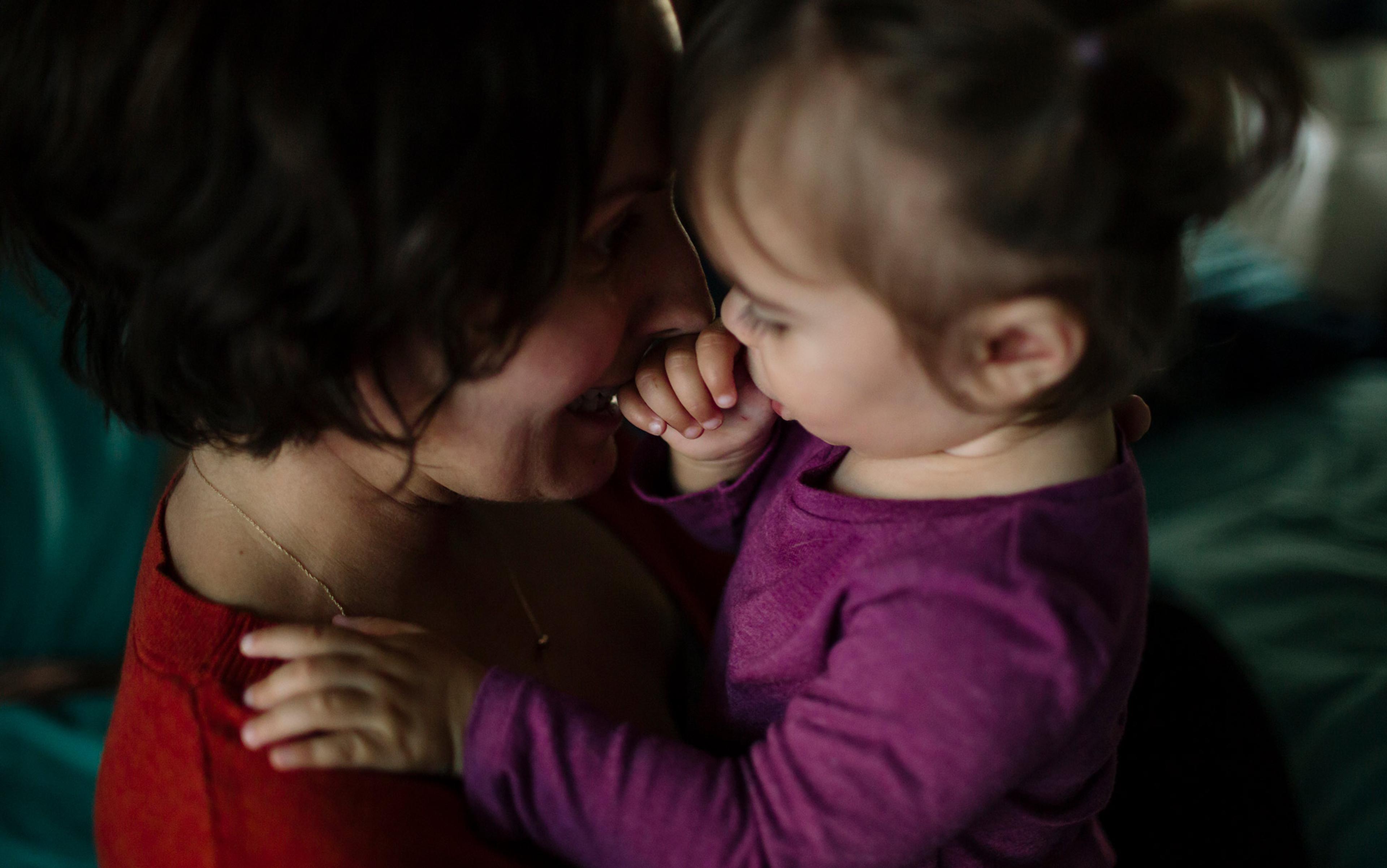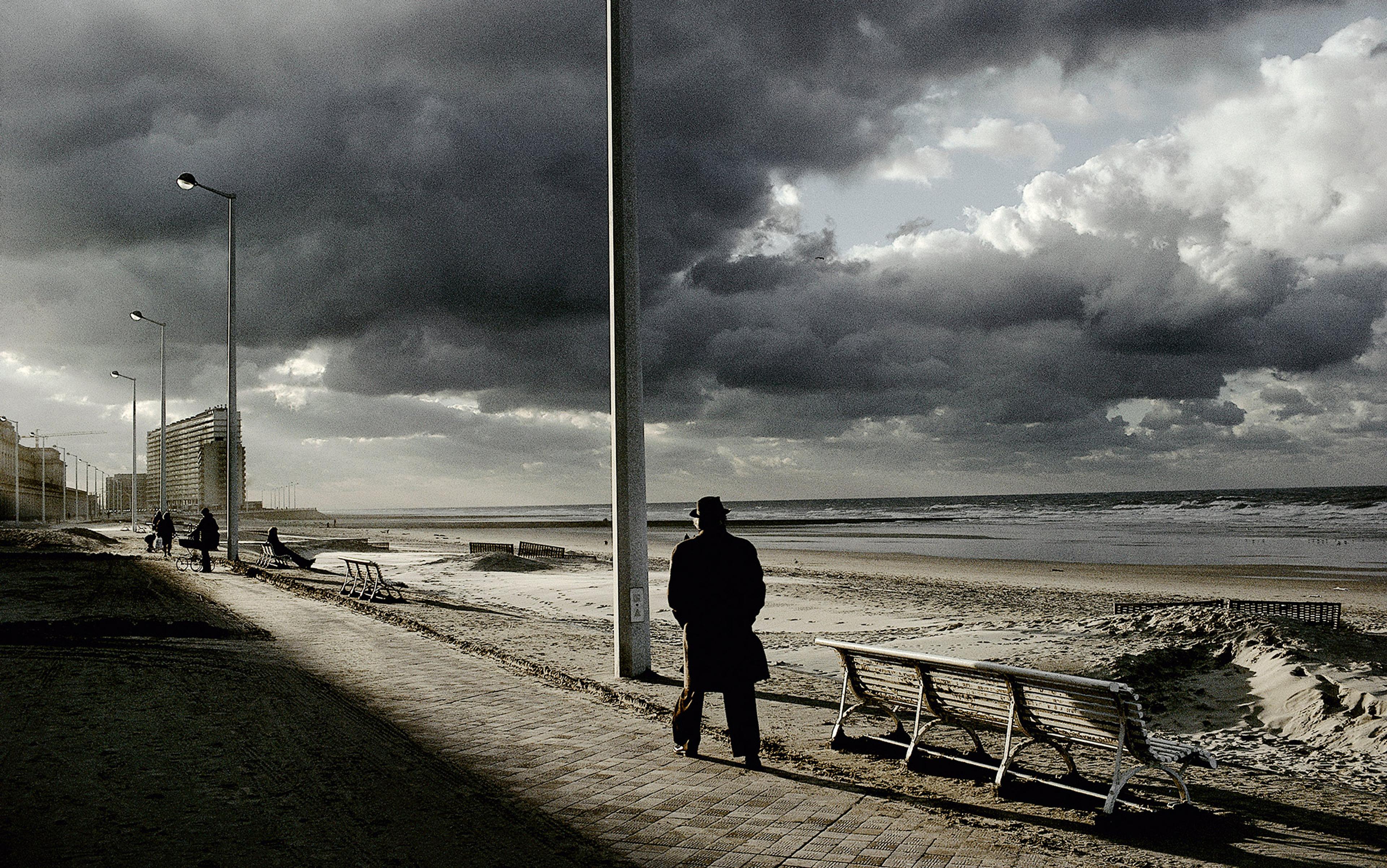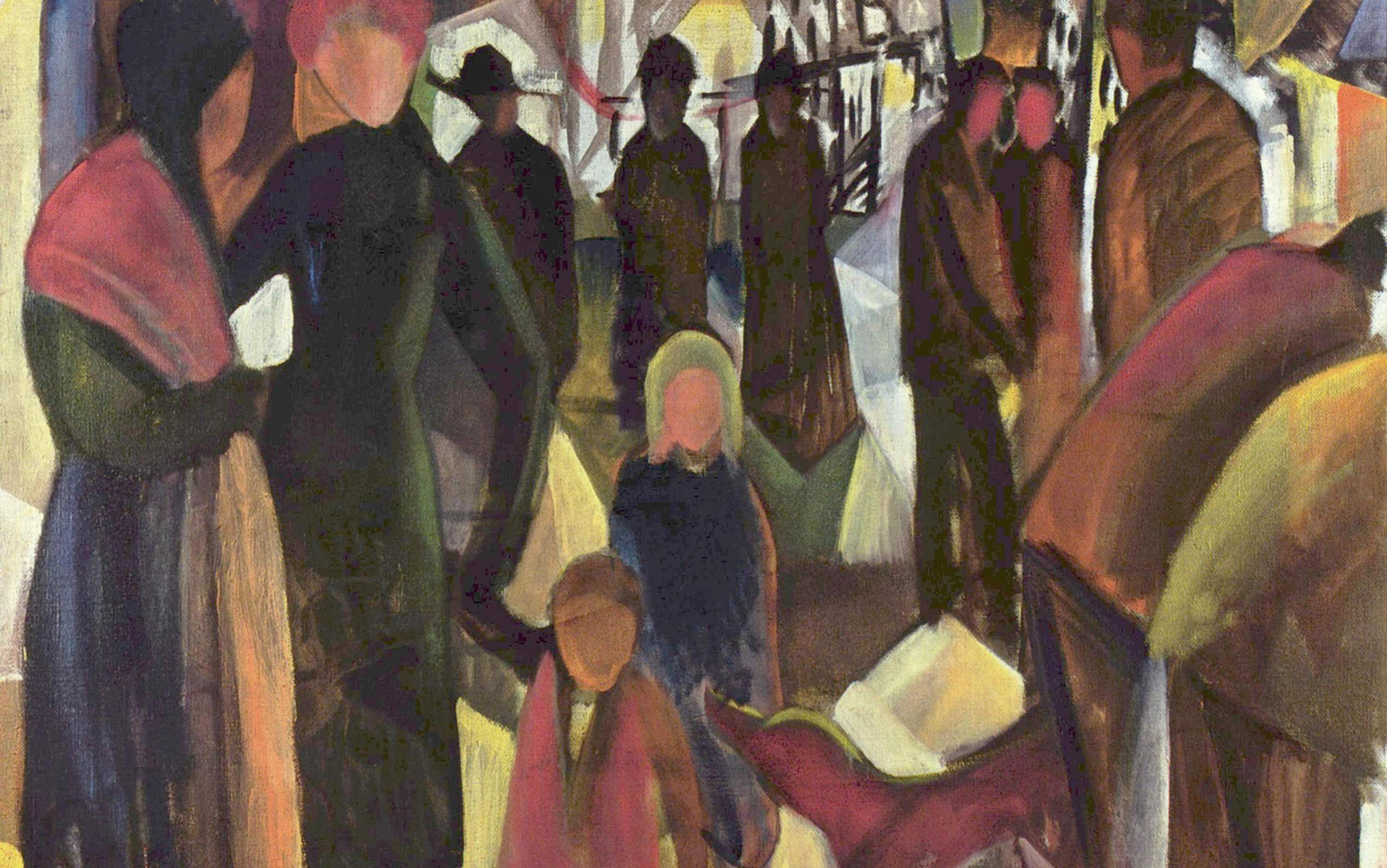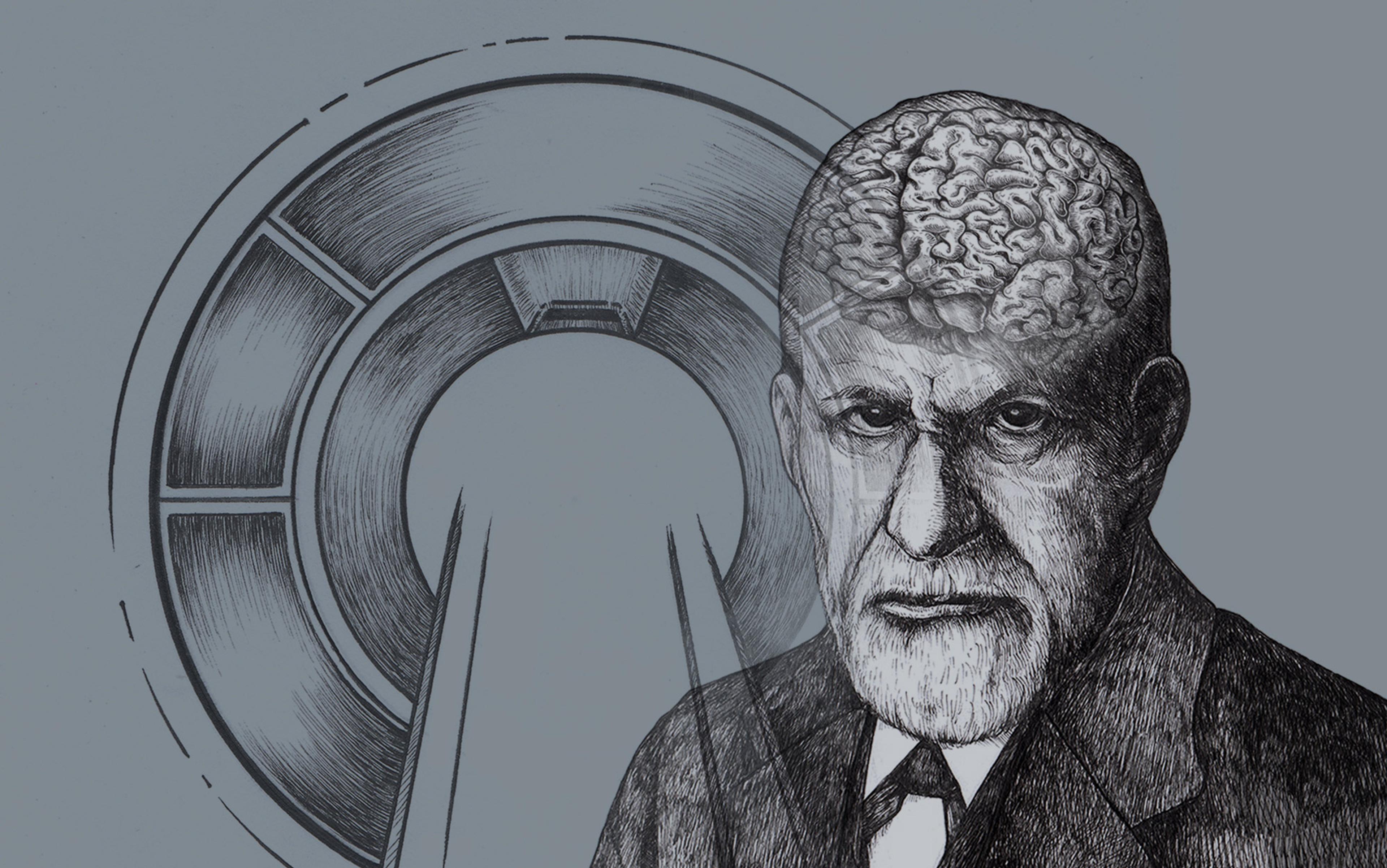Over the past 60 years, I’ve had the privilege to witness many poignant transformations. As a practising psychologist, I’ve witnessed them in state hospitals, in psychiatric emergency clinics, in drug and alcohol agencies, and in private practice; and as a youth I experienced them in my own intensive psychotherapies. There is little ‘pretty’ about these ordeals, but when they succeed they are profoundly gratifying: life-changing.
Poignant transformations emerge from the depths of despair, but they result, if one is fortunate, in the heights of renewal. Certainly this was true for me, and many of the people I’ve known or worked with. What could be more precious than the gift of liberation from crippling despair, of being freed to pursue what deeply matters? What could be more critical than participating in – really grappling with – the rescue of one’s soul?
Yet what I’m seeing today throughout our culture is an increasing tendency to skip over this grappling part of the equation and to shift abruptly to the transformational part. Not that there’s anything untoward about desiring to be rapidly transformed, it’s perfectly natural. When one is in distress, one seeks an instant remedy. I do that, my friends do that, and it’s a good bet that you do that also; it’s instinct. However, there are solid reasons to question instinct at times. For example, most people don’t punch someone just because they feel slighted. Similarly, most people don’t just blurt out whatever they feel just because they feel it. To the contrary, there is much to consider from the people you might hurt, to your conscience, to the setting and circumstances of the event. I’ve seen many clients who initially want to assault someone who assaulted them; however, they rarely do. This is because through the course of therapy, these clients recognise that their assailant is often someone they can relate to – or perhaps even love – and they don’t, in the end, want their fellow human being to suffer as they themselves have suffered. There are many times when delay is much preferred to reacting, especially when it comes to emotions.
Emotions are wonderful signals – they alert us to danger and they mobilise us when action is called for. But they are also highly complex, variegated. For example, many people feel contemptible or unwanted at times, yet they don’t resort to suicide or drugs. They see that, despite their dark mood, they have a right to live and grow, just as others live and grow, and that they can become something more than the stereotyped messages about themselves, such as that of being a failure. These are messages, by the way, that too often come from others who themselves feel contemptible and unwanted and who project those devaluations onto their unwitting victims. But such realisations, particularly if they are to endure, often take time, they take struggle, and they take encounters with larger parts of ourselves that go beyond our internalised oppression to a kind of conciliation. In the end, depth and existential therapy promote a hard-won coexistence between rivalling parts of ourselves, parts that sometimes agonise yet in the long run shed light on the experience of being fully human: of being deeply and richly alive. Put more formally, existential therapy emphasises three major themes: freedom to explore what deeply matters to oneself; experiential or whole-bodied reflection on what deeply matters; and responsibility or the ability to respond to, act on, and apply what deeply matters.
Yet today it is all too easy to bypass such freedom, experiential reflection, and response-ability – such grappling with who we are and who we are willing to be. For today we are seduced by an avalanche of devices, formulations and machine-meditated transactions making it all too tempting to let others, including mechanical others, do the job. Whether it is psychiatric medication, psychotherapy apps, 12-session clinic appointments or the distraction of net-surfing, there are innumerable ways to surmise that our pain has been dissolved, that we have been transformed, and that life proceeds apace.
But the looming and overarching question is: at what cost? At what cost is an externally or even cerebrally normalised life, a life of routine and regulation, elevated over a life that flops and flutters but also throbs? At what price is a life that sails over the many-sided intricacies of emotion and the ripples of discontent? Too often the price is death, both literal and figurative, and the statistics bear that out. Consider rising rates of depression and addiction, and the sense of isolation often linked to smartphones.
My earliest memory is a gauzy image of my parents weeping on the living room couch. That was when I was two and a half years old, and my seven-year-old brother Kelly had just passed away. It was 1959, and the combination of chicken pox and pneumonia proved too much for an otherwise radiant and vigorous child. The explosion of this event in the collective psyche of our family cannot be lucidly grasped. The most I can say is that the parents I knew before the event were dimly recognisable in its crushing aftermath. The warm and playful sibling I knew – the smiling leader – was vanquished, and in his place yawned an unrelenting void, a pit of rage, sorrow and terror.
By three years old, I was imploding. My defences were all but expired. I had night terrors and I had tantrums. I was panicked and I was lost – floundering, tailspinning into a helpless and paranoid world.
Given that ordeal, I’m fairly certain that if I had the same experience today that I’d had in 1959, I would be hastily pacified by drugs. Instead, my parents sat with me back then. They did all they could to talk me through my battles and, eventually, at age five, they referred me to a psychoanalyst. This psychoanalyst helped to turn my life around; for although I continued to have profound fears and outbursts, he helped me to work through rather than mask over these potentially restorative maladies. Greatest of all, he was a rock-solid presence who enabled me to say or feel anything. I was hanging on by a thread, but he remained a pillar, steadfast and supportive, until I passed through the storm.
Yet today, how many children are encouraged to work through their torment – or even to supplement their medication with an emotionally supportive encounter? How many are granted the time and money to do so? Few, I would venture. But what most are encouraged to do is to ingest antidepressants, anti-anxiety meds and a variety of mood-stabilisers. While these remedies can at times be lifesaving, too often they are pushed by pharmaceutical companies and insurers more concerned with profit margins than the enduring care of people and people’s own resources to live the life they seek.
I wonder how I would have turned out if I had been treated by today’s standard. I wonder if I would have experienced the rigours of being alone, or being challenged, as I was by my analyst, to develop inner resources such as my creativity, curiosity and imagination. He encouraged me to reflect on the bases for my fears and to move at my own pace. He respected me and my capacities, which in turn spurred me to create drawings, stories and thoughts about life’s puzzlements; or to venture out into uncertain terrains, relationships and ideas, which I eventually did after much tussling and even further therapy.
The chief problem with many contemporary interventions is that they are one-dimensional. For example, psychotropic medications aim at making people feel calmer if they’re anxious, or more energised if they’re depressed. Cognitive therapies aspire to change so-called irrational thoughts (such as fear of flying or a sense of worthlessness) into rational, evidence-based thoughts. Behavioural therapies aim at reinforcing adaptive habits to replace maladaptive habits, and so on. However, the problem with these strategies is that they work on a limited basis. If one wishes to live more efficiently along clear and culturally approved lines, then one is notably helped by such techniques. If one wishes to live a comparatively regimented and low-risk life, these remedies are appropriate. However, if one is among the sizeable and perhaps growing population that seeks more dimensionality in life – more meaning, more vitality, more personal and interpersonal richness – then something more challenging might be called for.
After a lifetime of research, the existential psychologist Rollo May concluded that many of the most vital and creative people through history were strongest at precisely their most vulnerable points. In The Psychology of Existence (1995), a book I co-wrote with May, he included a chapter called ‘The Wounded Healer’, about what makes a good therapist. There, May gave the example of the renowned psychologist Abraham Maslow who was lonely and unhappy as a child but who formulated theories about optimal living and peak experiences. May went on to describe a host of well-known and lesser-known people who faced and integrated the sides of themselves they feared and, through that process, fostered creative and productive lives.
May’s thesis is backed by a host of distinguished investigators, including Carl Jung, Silvano Arieti, Frank Barron, and Maslow himself, who described the self-actualiser – the optimal personality fulfilling his potential and life’s true dreams. ‘One observation that I made has puzzled me for many years but it begins to fall into place now,’ Maslow wrote in Toward a Psychology of Being (1962). ‘It was what I described as the resolution of dichotomies in self-actualising people … These most mature of all people were also strongly childlike. These same people, the strongest egos ever described and the most definitely individual, were also precisely the ones who could be the most easily egoless, self-transcending, and problem-centred.’
The clinical psychologist and researcher Kay Jamison – the author of seminal studies on bipolar disorder and the book Touched With Fire: Manic-Depressive Illness and the Artistic Temperament (1993) – agrees. Bipolar herself, Jamison described dozens of artistic luminaries throughout history who appeared to fall on the bipolar spectrum, yet went on to forge exemplary contributions to society.
Now, granted, many of these luminaries lived very trying lives, and some even committed suicide, but many also had rich and invigorating lives with deeply gratifying results. Hence one of the chief questions for our age is what happens if we remove such life struggles, if we flatten the biology, if we remove the rough edges through technology and drugs? What happens if we bypass the need for people to confront their demons, their discomforts and their tears? Would the artistic creation that results be the emotional equivalent of one that was inspired by the pathos, perplexity and toil of the human artist?
The most popular treatments today, such as medication and cognitive behavioural therapy (CBT), are often short-term and have a mixed record with regard to effectiveness. The emerging view is that they are helpful for relief of symptoms such as negative thoughts, poor appetite and phobias, but questionable when it comes to complex life issues, such as the search for meaning and purpose, and the struggle with love.
Is the experience of a therapist or device enacting an empathic response the same as actually empathising?
Other new remedies include the development of virtual reality (VR) exposure-based therapy for post-traumatic stress disorder, the use of neurofeedback from fMRI data to guide therapeutic practice, and apps for everything from anxiety, to depression, to irritable bowel syndrome. The research on these devices is still very much evolving, but I have the creeping feeling that we are entering a brave new age where statistical and mechanical manipulation is replacing personal discovery and risk.
Is the virtual encounter with one’s anxiety – or desire, for that matter – the same as the actual encounter? Is an app the same as a human healer (let alone a wounded healer)? Is the experience of one’s therapist or device enacting an empathic response the same as him or her actually empathising? Is this performance of a relationship, based on manuals and statistics, the same as a personal evolving relationship, with all its angst and vulnerabilities, its challenges and surprises?
I doubt it, and mounting studies uphold the value of person-to-person, genuine therapeutic relationships as well. Now, there can be much value to short-term ‘mechanised’ relationships. They can reach people where few human professionals live, or they can help anyone with disability who has difficulty travelling, or they can relate to young people schooled on hand-held devices. But are they the ‘be all and end all’ that so many in our society are embracing?
It seems to me that we are moving headlong into the engineering quagmire that so many humanistic therapists have feared. This is an approach where the emphasis is on the device, technique or algorithm and not on the patient’s inbred capacities for revitalisation. It is a model that stresses standards of normalcy, regulation and calmness that are imposed from without as distinct from within the subjective and interactive energies of persons. Finally, it is a model that can rob many of us of the virtues – not just the anguish – of our many-sidedness.
Here is a list of sensibilities that I probably would have been ‘spared’ had I been drugged and plugged into devices as a child:
- the trial of being alone;
- the angst of great sorrow;
- the inertia of great despair;
- the shudder of great fear;
- the terror of fragility;
- the distress of uncertainty;
- the bitterness of rage;
- the panic of feeling lost.
But here now is a list of sensibilities that I likely would not have developed had I been ‘drugged’ and ‘plugged’:
- the creativity of being alone;
- the sensitivity of experiencing sorrow;
- the mobilisation spurred by despair;
- the defiance sparked by fear;
- the humility generated by fragility;
- the possibilities opened by uncertainty;
- the strength aroused by rage;
- the curiosities prompted by disarray;
- the self-exploration, depth therapy and enquiry inspired by my entire ordeal.
It seems to me that one overarching property distinguishes human from mechanical existence. It is not consciousness, because artificial intelligence is already showing that mechanical entities can achieve a kind of signal detection that simulates awareness – consider robots that register temperature changes in the environment. It is not reflexive consciousness, which is the ability of consciousness to have some level of awareness of itself, because scientists are already working on machines that can readjust their calculations based on incoming data; and it is not even the capacity to experience emotions, because there are neural chips in development that will someday be able to replicate the biochemical processes that comprise, say, sadness or elation. (In crude form, this is possible today with psychotropic drugs.)
By contrast, the biggest if not insurmountable hurdle for artificial intelligence is a much more complicated problem – it is the experience of life’s paradoxes. As with the testimony of my childhood ordeal, it is the experience not of a single image, thought or emotion, but of the sublimely interwoven image, thought and emotion; each of which can both dovetail and clash with one another.
Such paradoxes include the sliver of fear in a loving relationship, or the hint of sorrow in a moment of glee, or the taste of envy in the most admiring friendships; and it is many more delicately nuanced combinations that lend life its zest, its pathos and its intensity: its awe.
Consider how each of these so-called negative emotions echo awesome ranges of awareness:
Sadness comprises sorrow and despondency, the profound sense of bereavement and loss. But post-traumatic growth studies also indicate that sadness alerts us to the fleeting nature of life, the preciousness of the moment, and the need to have empathy for others’ woes. Conversely, it serves as a point of comparison with – and therefore can help to intensify – contrasting feelings such as unbarred joy, elation and delight. Finally, sadness can ‘go through the centre’ of ourselves, as Rainer Maria Rilke put it in Letters to a Young Poet (1929); it can bring something new, something life-altering. ‘Were it possible for us to see further than our knowledge reaches,’ he wrote, ‘perhaps we would endure our sadnesses with greater confidence than our joys. For they are the moments when something new has entered us, something unknown.’
Without anger, tenderness might be thin, the poignancy of kindness unnoticed
While fear diminishes and confines us, it also highlights that which towers over us. Certainly, fear can humiliate, but research suggests that it can also sober us about what can and cannot be achieved. Fear acts as a backdrop for courage. For, without fear, courage would mean little, and likely impact little in the course of our lives. Would we even seek to be courageous if we had no fear? Would we seek new fields and fresh thoughts, sensations or innovations without encountering some degree of fear? These questions are rarely asked by enthusiasts of so-called transhuman technologies.
Anger arouses danger, explosiveness and domination. It is a fiery blast, and an expansion that threatens decimation of others. But informed studies also show that anger is a way of standing up for oneself as in righteous indignation; it is an impetus to courage and rejuvenation of spirit. Invigorating revolutions have upwelled from anger, and so have personal liberations. Without anger, tenderness might be thin, the poignancy of kindness unnoticed.
Coveting the qualities of another is the seedling of envy; obsessing over and fantasising about possessing those qualities is how envy blossoms. Envy arouses desperation to be something other than what one is; it is a maddening torment. But my experience as a therapist, and as a client too, has shown me that envy is also an aspiration, a prospect and a potentially life-changing breakthrough. We see the glimmers of our desires in those we envy, and thereby have some capacity to nurture those desires in ourselves. Envy contrasts with contentment and, by way of contrast, lends contentment its restorative depth.
Guilt alerts us to words or deeds we regret. It is a hammer in the depths of conscience, and it pummels all forms of complacency. Guilt dims our acceptability and dashes our esteem. At the same time, as studies of psychopathy have shown, guilt – and its social counterpart, shame – jars us to improve, apprises us of our potentiality to do better, and moves us to heal others’ wounds. It’s hard to inspire change if we fail to encounter guilt.
The key to my own therapy, and indeed to depth-existential therapy as a whole, is that it supports the coexistence of emotional and intellectual contraries. I loved and I hated at the same time; I was terrified of death, and yet I was intrigued by its mystery, by the mystery of life. I was jarred by scary movies, and yet they opened me to alternative approaches to life, future possibilities and my own imagination.
By emphasising presence, depth-existential therapists make every effort to ‘hold’ the contradictions that naturally arise in the course of their relationships with clients, as well as within the clients themselves. In this way, depth-existential therapy becomes a staging ground for the humility and wonder, sense of adventure and awe for living that are the hallmarks of what we call a ‘whole-bodied’ transformation.
As a client in therapy myself, I have moved from positions of abject terror, to gradual intrigue, to wonder about my life circumstances. For example, I have shifted from paralysis before the unpredictability of fate, to incremental trust, curiosity and fascination with what might be discovered. Through their abiding presence, my therapists supported me to feel safe enough to face my inner battle. They ‘held a mirror’ for me to see ‘close up’ both how I was currently living as well as how I could live, should I gradually step out of my cramped yet familiar world. Back and forth I swung between terror and wonder, and wonder back to terror; from quailing apprehension and incremental intrigue toward that which horrified; from social withdrawal to growing risks with my therapists and the world at large.
The result was that, after several years of therapy, I was able to experience the fuller ranges of my thoughts, feelings and sensations. I, like many of the people I have worked with, was freed to attain goals but also a greater presence to my life and to life itself. The result was that I became less identified with the old and crippling parts of life, and more identified with the new and evolving parts – the parts that deeply mattered.
Any decision emerging from the therapy is energised by the whole body and that patient’s visceral core
Personally, I practise what I call ‘existential-integrative’ (EI) therapy, which coordinates a range of useful modalities under the existential approach. As a therapist, I am available to work with the patient at the most immediate, affective, kinaesthetic and profound level of contact possible.
For example, when I work with a patient, I see myself more as a fellow traveller, as the existential analyst Irv Yalom put it, rather than the formal ‘doctor’ serving up a remedy. I attempt to be available as a person rather than an engineer; I attune to the needs of my human patient, not to a bundle of electrochemical processes or a diagnostic label. That doesn’t mean I won’t try to support that patient in whatever way might be helpful at the given time, for example, with a medical referral or a problem-solving strategy, but I will strive to be available to that patient to address the feelings, body sensations and images behind the words and explanations.
All this involves attention to process, not just content. The approach supports a ‘whole-bodied’ awareness of both what the patient desires, as well as what blocks him or her from what is desired, on the deepest of levels, often beyond words. In this way, any decision emerging from the therapy is energised by the whole body and that patient’s visceral core.
Not every patient can or wants to work at that level, explaining my integrative offering; but for those who can and do, the approach provides the chance for a life-changing shift. This shift bolsters one’s capacity to experience the fuller ranges of one’s thoughts, feelings and sensations – one’s whole-bodily encounter with life. Based on that foundation, it’s possible to make bold, concrete, meaningful changes in one’s life. Put another way, such clients are able to cultivate a deep and abiding presence to themselves and the world, and through that presence, to experience humility, wonder and a sense of adventure toward living. This sense, for those who can really live it, fosters meaning, poignancy and awe.
The reason we need such therapy today is precisely because the awe-based is too often left out of our programmatic, medicalised approaches to life. We assist people to change, but increasingly the impetus for that change is expedience: regulating our emotions, stopping negative thoughts, sleeping better at night, becoming more efficient, living more rationally and so on. And while these therapeutic ends are by no means trifling, they are but ‘footholds’ for many people along a broader and deeper path – the zest, meaning and awe of being alive.
Parts of this essay were adapted from ‘The Spirituality of Awe: Challenges to the Robotic Revolution’ (revised edition, 2019), published by Colorado Springs, CO: University Professors Press.
This Essay was made possible through the support of a grant to Aeon from the John Templeton Foundation. The opinions expressed in this publication are those of the author and do not necessarily reflect the views of the Foundation.
Funders to Aeon Magazine are not involved in editorial decision-making.






